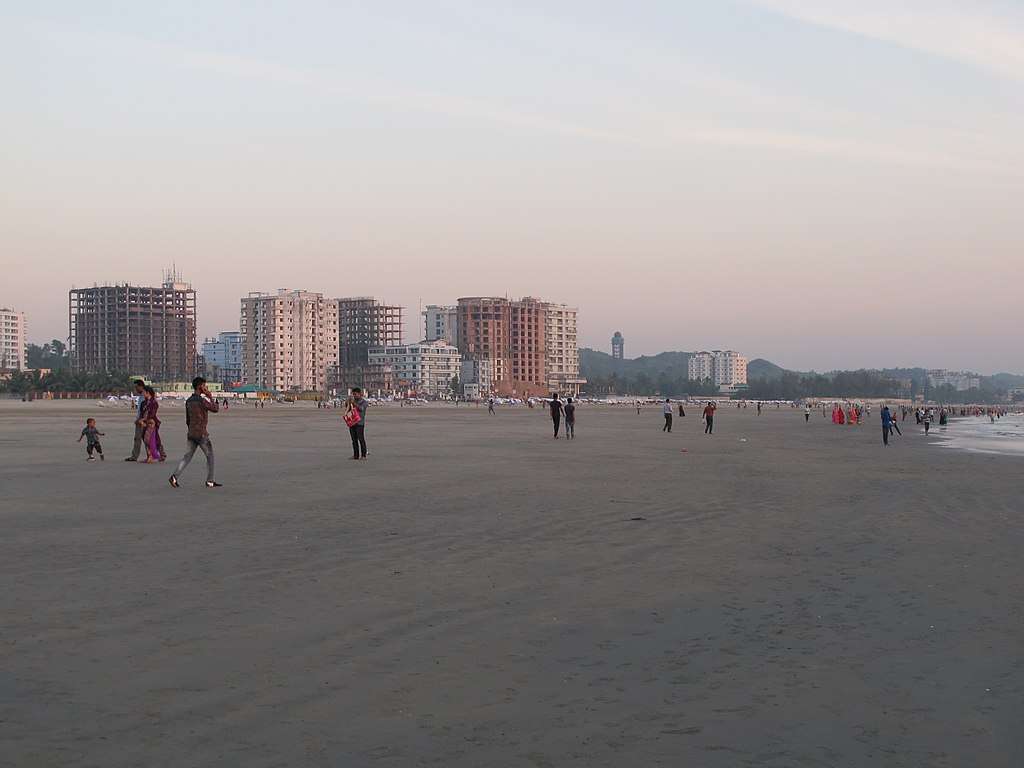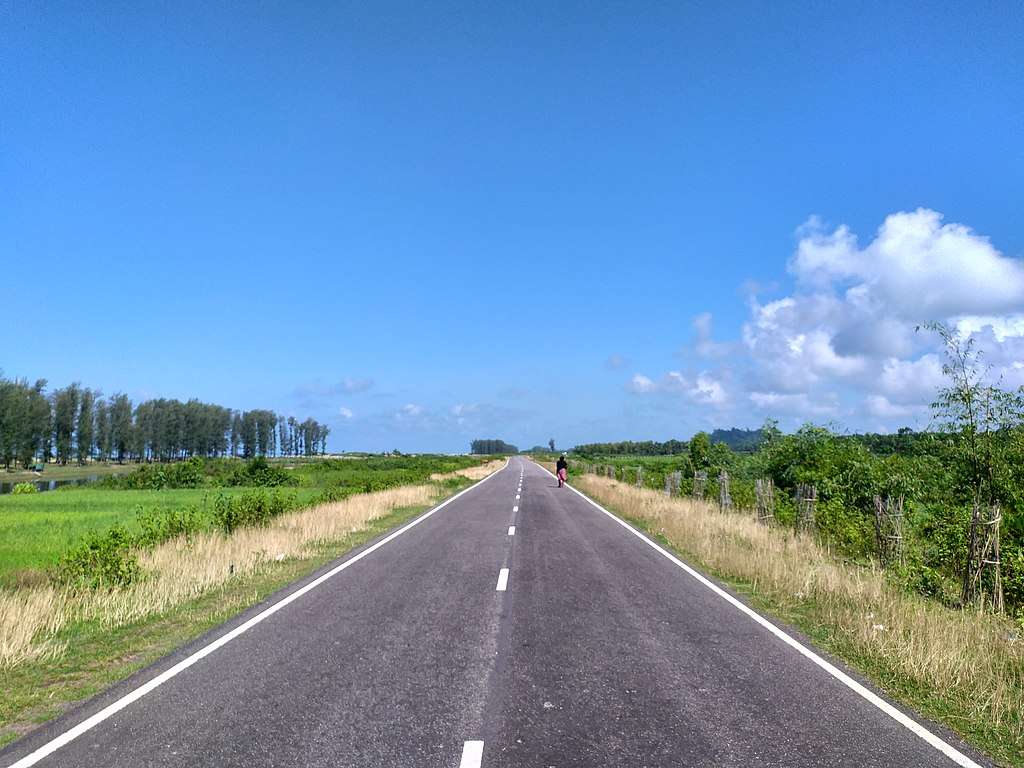
Introduction of Cox’s Bazar
It’s a stunning coastal town in Bangladesh, is renowned for its unparalleled natural beauty and unique cultural heritage. With the world’s longest natural sandy sea beach stretching over 120 kilometers, Cox’s Bazar is a top destination for tourists seeking sun, sea, and serenity. This article delves into the many facets that make Cox’s Bazar a must-visit location, covering its geography, climate, demographics, educational institutions, economy, transport, and tourism.
Geography and Climate
It is located in the southeastern part of Bangladesh, along the Bay of Bengal. Its geographical coordinates are approximately 21.4272° N latitude and 92.0058° E longitude. The town is bordered by the Bandarban District to the east and the Chittagong District to the north. The extensive coastline, lined with soft golden sands and lush green hills, creates a picturesque landscape.
The climate in Cox’s Bazar is tropical, with a distinct monsoon season. The weather is typically warm and humid, with temperatures ranging from 20°C to 35°C. The best time to visit is during the winter months, from November to February, when the weather is cooler and drier, providing ideal conditions for beach activities and sightseeing.

Demographics
Cox’s Bazar is home to a diverse population of around 265,000 people, according to recent estimates. The town’s demographic makeup includes Bengali Muslims, who form the majority, alongside smaller communities of Buddhists, Hindus, and Christians. The area is also known for its indigenous groups, such as the Rakhine and Marma, who contribute to the cultural richness of the region.
Educational Institutions
Education in Cox’s Bazar has seen significant advancements over the years. The town boasts several notable institutions, including Cox’s Bazar Government College, Cox’s Bazar International University, and Cox’s Bazar Medical College. These institutions offer a range of academic programs and have been instrumental in fostering local talent and driving regional development.
Economy and Development
The economy of Cox’s Bazar is primarily driven by tourism, fishing, and agriculture. The town’s extensive coastline supports a thriving fishing industry, while the fertile lands are ideal for cultivating crops such as rice, vegetables, and fruits. In recent years, Cox’s Bazar has experienced considerable development, with numerous infrastructure projects aimed at enhancing its appeal as a tourist destination. These projects include the construction of luxury hotels, resorts, and improved road networks.
Transport
Getting to this is convenient, thanks to its well-developed transport infrastructure. The town is accessible by air, road, and sea. Cox’s Bazar Airport offers regular flights from Dhaka and Chittagong, making air travel a popular choice for visitors. Additionally, the town is well-connected by road, with frequent bus services from major cities in Bangladesh. For those who prefer sea travel, there are ferry services from Chittagong, providing a scenic route to Cox’s Bazar.
Future transport plans include the expansion of the airport to accommodate international flights, which is expected to further boost tourism. The government is also working on enhancing the road network to improve accessibility and reduce travel time.
Tourism
It’s claim to fame is its status as the location of the world’s longest natural sea beach, stretching an impressive 120 kilometers. This iconic beach is divided into several segments, each offering unique attractions and activities.
- Laboni Beach: The most popular and accessible part of beach, ideal for sunbathing, swimming, and beach sports. The vibrant beachfront is lined with shops, restaurants, and cafes.
- Himchari National Park: Located a short drive from the town, this park is known for its stunning waterfalls, lush greenery, and diverse wildlife. It’s a perfect spot for nature enthusiasts and trekkers.
- Inani Beach: Situated to the south of beach, Inani Beach is famous for its crystal-clear waters and coral stones. It’s a quieter alternative to the bustling main beach, ideal for a peaceful retreat.
- Saint Martin’s Island: A small island located about 9 kilometers south of the tip of the Cox’s Bazar-Teknaf peninsula, Saint Martin’s Island is known for its coral reefs, clear blue waters, and marine life. It’s a paradise for snorkeling and scuba diving enthusiasts.
It is not just about beaches. The town’s rich history and culture are reflected in its numerous landmarks and festivals. The Buddhist temples, such as the Aggmeda Khyang, showcase the spiritual heritage of the area, while the local markets offer a glimpse into the daily lives of the residents.
Is that the longest beach in the world? Yes, it holds the title of the world’s longest natural sandy sea beach, a fact that attracts millions of tourists each year.
Why is Cox’s Bazar called that? The town is named after Captain Hiram Cox, an officer of the British East India Company, who was known for his humanitarian work in the area during the late 18th century.
Gallery
Caption: The breathtaking view of Cox’s Bazar Beach at sunset.
Caption: The lush greenery and waterfalls of Himchari National Park.
Caption: The serene and clear waters of Inani Beach.
See Also
- Saint Martin’s Island: A Coral Paradise
- Top 10 Beaches to Visit in Bangladesh
- Cultural Festivals in Cox’s Bazar
References
- “Cox’s Bazar: An Overview,” Bangladesh Tourism Board.
- “Climate of Cox’s Bazar,” Meteorological Department of Bangladesh.
- “Demographic Profile of Cox’s Bazar,” Bangladesh Bureau of Statistics.
- “Educational Institutions in Cox’s Bazar,” Ministry of Education, Bangladesh.
- “Economic Development in Cox’s Bazar,” Bangladesh Investment Development Authority.
with its stunning natural beauty, rich cultural heritage, and vibrant economy, is a destination like no other. Whether you’re looking to relax on the world’s longest beach, explore lush national parks, or immerse yourself in local culture, It has something for everyone.

